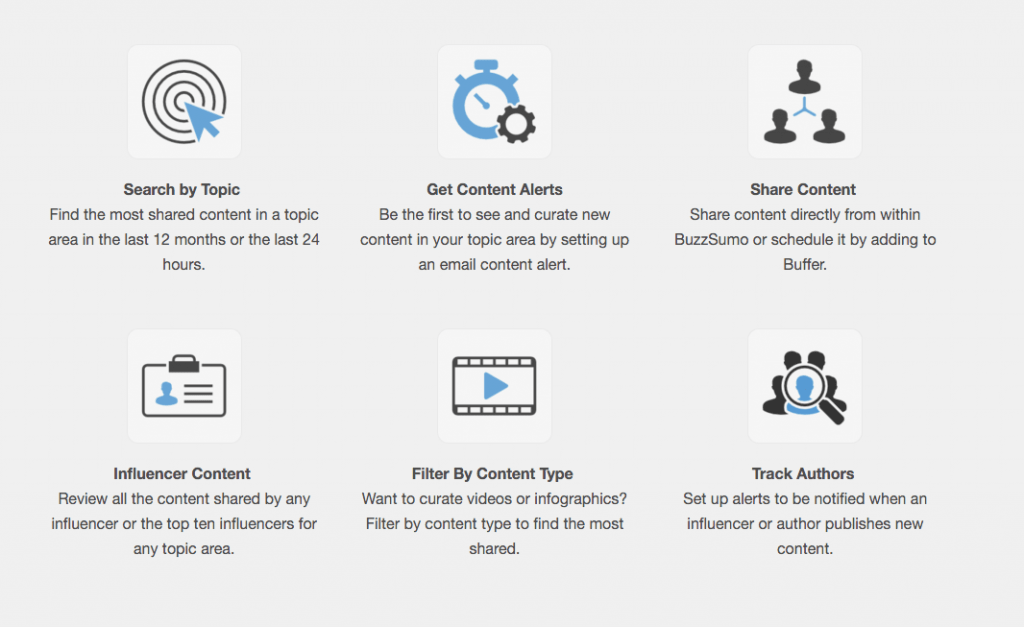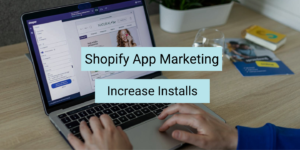You have heard this a thousand times already, but content marketing is riding the high wave and will continue to do so for as long as the consumer market wants to make informed purchases – instead of ones they just end up making for keeping up with trends. But having worked in the B2B industry for a while now, there’s one thing that I’ve realized – enterprise content marketing is a different ball game altogether and you need to know the rules to play the game smartly enough!
Enterprise content marketing needs to be end-to-end
Let’s start with the most obvious thing that we have probably heard a number of times already. You can’t just be publishing one blog on what your product addresses and then hope for the best of results. It might get you some traffic on distribution and syndication, but what happens after?
The number one mistake that 80% of us content marketers make in enterprise content marketing, is to not map the content marketing strategy to the user personas in an end to end manner. If we have a traffic puller for instance, we tend to promote the next article that might actually be suitable for someone further down in the funnel – leaving the top of the funnel absolutely overwhelmed and clueless about what they are being offered, how it benefits them and whether they need the solution being offered to them.
Think about it – you’re planning to buy the new iPhone, but there are a gazillion other brands today that seem to offer competitive features at reasonable prices. Do you just go and buy the new iPhone, or do you first read about it, consider the pros and cons, make comparisons and then invest in it? The latter, because it is a whole lot of money after all and you don’t want to be changing phones every few months!
Then why is it that we don’t think of enterprise solutions to be as big a decision as this? Simply stating a problem and offering a solution doesn’t cut it and it is time start right from the beginning to fix how we market high-value solutions in the coming time.
1. Your website should be more than just a feature list
There’s a reason why the likes of MailChimp, Freshworks and others have been constantly working on their websites to make them look audience-friendly or what we marketers like to call, ‘appealing to the customers’. Over the years, both the solutions haven’t just improved their site design, but also the way they share information about what they offer in terms of the copy. It’s no longer all about ‘hey, we offer this and this is what you need to pay’. The whole focus is around ‘hey, we relate to your challenges and we think we can help you with these features; come take a look’.
That’s exactly the reason BTW, that we at BrandLock are actually taking our time to even come up with a home page. It’s not just keeping up with design trends. It’s how you tell your audience about yourself, and what reasons you give them to interact with your business or even consider purchasing an enterprise solution like yours.
Here are a few things to always keep in mind:
- The first few seconds on your site should clearly state what you do – trust me, don’t get experimental there!
- Show some proof that your solution works – you made a claim, now prove it; simple
- Tell them how your solution works – you fed them some logos and numbers, now show them how you do it while they’re still eager
- State how you’re different – if your product works better than the rest, make sure you tell them how
- List down the best of features – and cut out the ones that seem as irrelevant as industry jargons
- Make sure every element on your site gives a peek into what your product does
- Ensure each element you use is interactive and nudges the visitor to engage with you
- Be available – if I may recommend, use Intercom or Drift to start a conversation because enterprise solutions are hard to decide on
- Oh, and make everything mobile friendly

2. Your digital footprint needs to be as good as an influencer (well, almost!)
You’ve created a kickass website and are ready to make an impressive first impression. But what happens when this visitor goes on to browse the rest of the internet to find out what you’re doing, what your brand is perceived as, what customers like them are saying about you, etc. Yes, I’m talking about your digital footprint!
Starting right from Glassdoor where your employees or ex-employees can drop reviews, to what third-party sites have listed your solution, etc, you need to make sure that you got all your digital checkpoints well in consideration. This might mean that you need to move a little away from your end marketing goal – generating leads, but it also means that you’re setting yourself up for a more rock-solid presence online that sure to get you more customers in the coming time.
Here are a few things you need to keep in mind here:
- Shortlist 5-10 things that you want your brand to be known for
- Take note of where your audience is and shortlist the channels where you can be present
- Ensure all the aspects of brand safety are well taken care of
- Create multiple check-points for your audience to be able to contact you
- Don’t let negative reviews remain ignored – address the feedback and tell them how you’re working towards a better solution
- Get people to review your product or services – people trust people, period
- Remain socially active – as daunting a task as it may seem
Also read: Making SaaS Product Marketing Work Well
3. Your prospect’s journey is your way to fairytale endings
You might think I’m stupid to even say this because you already have all the emails automated right from the point someone signs up for a free trial on your site. But what about the ones who haven’t really converted? Do you just let them visit your website and leave without nudging an action out of them or would you rather implement ways to bring them back?
I think the latter.
That is why you need to map a prospect’s journey with your brand till you reach a point of conversion – negative or positive. Go back to wherever your brand exists online and take a look at it from a consumer’s perspective. Reverse engineer how a typical consumer would discover your solution, how easy it is for them to consume that information and get in touch with you, how many steps they go through to finally convert in some manner with your business.
A few things that you need to keep in mind here are:
- Make sure that where your audience discovers you and where they land on your site or a landing page, say the same thing
- See if it is easy for your prospects to contact you on the very first platform that they discover you on – add your address, phone numbers, social links and even email addresses!
- Segment your prospects based on where they come from, what they are looking for and how they are interacting with your business online
- Personalize their journey with your brand till they hit a milestone towards conversion – be as nice as Spotify is when they’re trying to understand your music preferences before suggesting anything to you
- In the process of it, make sure you remain their go-to source of information for anything remotely correlated to what your product does – create multi-stage content for best results

source
4. Your partners are your biggest supporters
I repeat enterprise solutions can be hard to sell. You don’t just have to explain why someone needs to pay you as much for a product, but also convince them that they need it in addition to what they are already making use of. That’s where your strategic partners step in and it is important that your marketing strategy highlights what they do too in a big way – has to be a win-win situation for everyone. Right?
Good examples here would be Freshworks and ReferralCandy – yes, I love these guys for what they do and it is hard to miss when I write about them. But hey, you have to appreciate the work they’re doing!
Each of their partner pages highlights why a business should partner with them, in what capacity and what they would gain out of it. But they don’t just stick to listing down hundreds of logos on their site. They also create social posts, blogs, etc that work around how two solutions – one their own and one their partner’s, works brilliantly to achieve a prospect’s goals.
The more you work together, the better you get at acquiring more customers.
Some things to keep in mind for strategic partnerships:
- Choose products that have a fairly established market and is addressing a similar target audience as yours
- Make sure you lay down the rules of partnership in every capacity – backed by a strategy that is a win-win for both
- Ensure that your partner is not looking into building a similar solution as yours – at least not immediately; that would be a bummer!
- Identify ways to track the success of your strategic partnerships with each solution – trust me, it will help you allocate resources better
- Don’t just boast about how good your product is; highlight what is in store for them
5. Your products need some ‘expert’ backing
As I mentioned before, people trust people and whether we like to believe it or not, influencer marketing sure is a thing. For example, if Ann Handley ever recommended trying out a marketing tactic that wasn’t being used by anyone in the industry yet, I’d blindfolded do it (well, of course after understanding what it is, how it works, etc).
That’s the power an influencer or an expert as you may call it in the B2B world, holds.
So while you’re doing your bit to put your best foot forward, make sure you’re able to rope in a few experts to review your product. This should be a part of your enterprise content marketing solution right from the beginning! I also like to refer to this arrangement as a partnership of sorts.
Here’s what you need to keep in mind:
- Shortlist B2B experts on the basis of their reach and the industry they are active in
- Make sure that their following is actually made up of people you want discovering your product
- Implement ways to track which expert helps you reach the maximum audience – you should know who you need to partner with for a longer period, for instance
- Set realistic goals out of expert reviews – don’t just jump the gun and ask for ‘leads’

source
6. Your product needs to seem absolutely unique
Let’s face it, any B2B product you see out there is churning out content endlessly. Some are writing 2 blog posts a week and some are going up to almost 10 content pieces in a week. Well, whatever floats your boat!
But if you really want enterprise content marketing to work for you, it’s time to roll up your sleeves and find ways to stand out from all this noise. While blogs are definitely a good way to ensure you’re pushing content to keep your audience engaged, investing in creating ebooks or hosting webinars and podcasts is another smart way to show your expertise.
In-depth content formats or interactive ones, basically help you establish more authority in the industry and whether you believe it or not, your customers are actually looking at ways to gain that knowledge from you. But of course, being unique doesn’t mean spreading yourself too thin, trying to do absolutely everything that is in fashion.
Some things that you probably might want to consider here, include:
- Take a rain check on the resources available to you- don’t start something you can’t sustain
- Identify the content formats your audience tends to engage with the most across all channels – even on your competitor’s pages
- Start small and then go big – experiment with these content formats one by one to measure their impact and only then go full force on something
7. Your data is your best friend
I would have written ‘measure, optimize and repeat’. But you’d call me someone who is just stating plain facts that you already knew!
But what I mean here is don’t just look at your Google Analytics and rejoice on how your site traffic is improving or how many leads you have gotten over time with your enterprise content marketing efforts. Dig deeper and see how this traffic interacts with you after landing on your website, or how a lead goes through your funnel to finally convert (or not).
Use data to identify your roadblocks, what you need to overcome those and of course, optimize your enterprise content marketing strategy accordingly. It might seem like a daunting task in the beginning, but a strategy that revolves around the actual market and consumer data reaps better results than one that you create every month based only on what’s trending in the industry.

source
To be able to make data your new best friend, you should:
- Understand at least the basics of GTM tags (Here’s a course by Experfy that might interest you)
- Shortlist analytics tools based on what solutions you’re making use of to execute your content marketing – don’t just blindly go with GA because it is obvious
- See how the analytics solutions integrate with the others you’re making use of for enterprise content marketing
- Take a look at your data more regularly – no, bi-weekly doesn’t cut it; go a week on week and get obsessed with data
While with the above you’re kind of all set to rock and roll enterprise content marketing, here’s a parting tip that I’d additionally share because I see it so often that it makes me go to sleep better than chamomile tea…
Don’t make enterprise content marketing boring
Because it really doesn’t need to be.
When 89% of businesses are investing in content marketing and half of them could be addressing a similar target audience as yours, boring your prospects is the last thing you want to do.
While you’re creating your enterprise content marketing strategy, make sure you include a few ways to create a WOW moment for your customers. Show them you’re not just a technology offering a solution; look for ways that show you’re human too.
Going back to what I always say, people trust people. So let your strategy use your brand’s story and the people behind building it all also do the talking!




